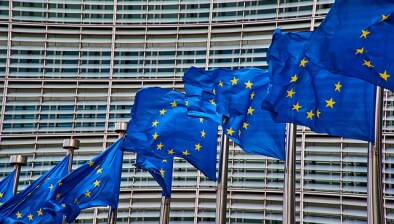Eoin Jackson: What next for the Energy Charter Treaty?

Eoin Jackson
Despite plans for an EU withdrawal from the Energy Charter Treaty, a failure to deal with its sunset clause will continue to threaten action on the climate emergency, argues Eoin Jackson.
On 7th July 2023, the European Commission announced its intention to facilitate a co-ordinated withdrawal of the EU and EU member states from the much-maligned Energy Charter Treaty (ECT). This result had appeared inevitable for a while, as there had been growing calls from a variety of stakeholders to address the incompatibility of the ECT with EU climate policy. However, while withdrawal solves the initial headache of what to do with an anti-climate treaty, lingering provisions of the ECT will need to be addressed to put the final nail in its coffin.
The most pressing issue facing the European Commission is the question of how to address the sunset clause provision to the ECT. Article 47.3 of the ECT stipulates that the provisions of the ECT will continue to apply for pre-existing investments for 20 years post the withdrawal of a party from the Treaty. This means in effect that a large majority of fossil fuel investments will continue to be protected under the sunset clause, and fossil fuel companies could continue to pursue investor-state dispute arbitration (ISDS) as climate policies begin to cut into their profits.
The problems caused by the sunset clause have already been seen in Italy, which withdrew from the ECT in 2016. Despite this withdrawal, Italy was still forced to pay €190 million in compensation to fossil fuel company Rockhopper following its decision to ban offshore oil drilling. An EU-wide application of the sunset clause could therefore be catastrophic to the EU’s attempts to detach from fossil fuels.
The European Commission has acknowledged the issue in its formal proposal for withdrawal, stating that “provisions of the ECT shall continue to apply to investments made in the Union by investors of other Contracting Parties, or in the other Contracting Parties by investors of the Union, for a period of 20 years as of the date of the Union withdrawal from the ECT. Article 47.3 of the ECT would have no impact on intra-EU relations, to which the ECT has never, does not and will never apply, including its Article 47.3.”
In other words, the European Commission intends for there to be no ISDS claims between EU-based companies against EU member states. This in effect is merely a restatement of the existing status quo, after a 2021 CJEU ruling in Moldova v. Komstroy determined that the ISDS provisions of the ECT were not applicable to intra-EU disputes.
However, this ruling has not stopped ISDS tribunals from continuing to allow claims and render enforceable awards against EU member states.
In Infracapital F1 Sarl v. Spain and Kruck v. Spain, both ISDS tribunals refused to use Komstroy as a basis for declining jurisdiction over an intra-EU dispute. More recently, the English High Court rejected Spain’s attempts to challenge enforcement of an intra-EU based ECT award, on the grounds that the CJEU could not determine the extent of the UK’s own obligations under the ECT and wider international arbitration law. There have also been conflicting judgments in the US which have both enforced and refused to enforce intra-EU based ECT claims.
This confusion lends itself well to companies engaging in forum shopping to identify non-EU states where they may be able to enforce intra-EU ECT claims. Such efforts may weaken the effectiveness of an EU withdrawal unless and until all parties of the ECT can come to an agreement regarding how to address the sunset clause and wider protections for EU fossil fuel investments.
The EU itself may need to explore further legal challenges to the sunset clause. Thus far the European Commission has stated that it believes it is appropriate to pursue a “subsequent agreement between the parties regarding the interpretation of the treaty or the application of its provision” in accordance with the Vienna Convention on the Law of Treaties (VCLT). This would see all ECT parties agree to neutralize the sunset clause or at the very least agree not to apply it to intra-EU investments.
It should be noted however that the European Commission already attempted to institute this form of agreement to reduce, but not eliminate, the sunset clause in its proposed modernisation package in 2022. This package subsequently failed to be agreed upon, following disputes between EU member states and uncertainty regarding whether non-EU ECT parties would be willing to unanimously agree to such changes. While an EU-wide withdrawal may bolster the case for negotiation, there is no guarantee that these efforts will kill the sunset clause once and for all.
Should such an agreement fail, the EU may need to rely on international law and argue that the sunset clause can be neutralized under Article 62 of the VCLT, which allows for the termination of a treaty where there has been a fundamental change in circumstances since the conclusion of the treaty and such circumstances could not have been foreseeable to the parties at the time of this conclusion.
In this case, the fundamental change in circumstances would be the necessary radical action to address climate change. The secretariat of the ECT has anticipated this potential challenge and issued a preemptive response in November 2022, where it quoted from the ICJ ‘s ruling in the landmark environmental case of Gabčíkovo-Nagymaros Project (Hungary/Slovakia) stating: “The Court does not consider that new developments in the state of environmental knowledge and of environmental law can be said to have been completely unforeseen.” This line of thinking would imply that as climate change was a foreseeable issue back in the 1990s when the Treaty was first concluded, the EU and any other party that may wish to terminate certain aspects of the ECT, would not have a viable case in international law.
A statement from the ECT secretariat does not necessarily render any attempt to challenge the legitimacy of the sunset clause in international law null and void. The scientific consensus in favour of dramatic climate action has become far more clear with every IPCC report.
The EU itself declared a climate emergency in 2019 and many EU member states have declared themselves to be in a climate emergency. More broadly, the Paris Agreement has demonstrated a near universal commitment to keeping global temperatures within a scientifically acceptable boundary, which will only be possible through rapid detachment from fossil fuels.
The ICJ is in the middle of preparing an Advisory Opinion on states’ responsibilities in respect of climate change, which may have even further implications for any commitments to anti-climate treaties. All of this demonstrates that the world of investment law is not the same as it was in the 1990s and it is unlikely any ECT party could have foreseen the degree to which radical climate action would be required over the next 25 years.
The EU is the best placed entity to challenge the sunset clause. Whatever future approach it takes to the ECT will have implications for other investment treaties with the potential to clash with the scientific and political consensus in favor of greater climate action.
- Eoin Jackson is an Irish LLM candidate at Harvard Law School and a graduate of Trinity College Dublin School of Law.








